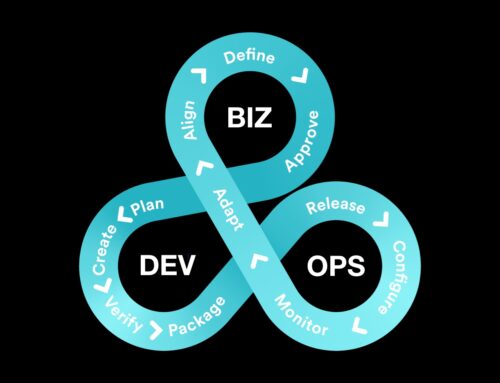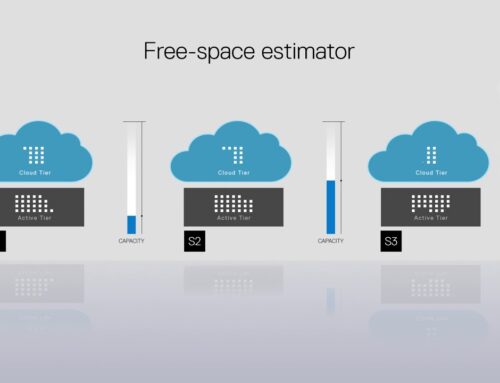BizDevOps is an innovative strategy that breaks down the walls between different teams in an organization, particularly business, development, and operations. By promoting seamless collaboration and communication, BizDevOps can bring your organization a plethora of benefits, from faster delivery times to better alignment with business objectives.
But, as promising as these outcomes are, they aren’t just handed to you on a silver platter. BizDevOps implementation involves more than just a declaration of intent; it requires careful planning, strategic execution, and consistent effort.
This article is here to guide you on that journey. Our aim is to equip you with practical insights and clear steps to successfully implement BizDevOps in your organization. So, let’s start turning the concept of BizDevOps from theory into practice!
The Prerequisites of BizDevOps Implementation
1. Understanding Organizational Readiness for BizDevOps
Before diving headfirst into BizDevOps, it’s important to assess whether your organization is ready for this transformation. This involves understanding the current state of your organization’s culture, existing processes, and tools. Ask questions such as, “Does our culture promote collaboration across teams?” “Are we prepared to adapt our existing processes to accommodate a more integrated approach?” Remember, implementing BizDevOps isn’t just a switch you flip; it’s a journey that requires cultural and procedural shifts.
2. Highlighting the Importance of Top-down Support:
Successful BizDevOps implementation doesn’t happen in a vacuum. It requires strong commitment and support from the upper management. Leaders need to not only endorse this transformation but also demonstrate their commitment through active involvement. They should clearly communicate the value and benefits of BizDevOps to the entire organization, address any concerns or reservations, and continually reinforce the importance of BizDevOps to the company’s success.
3. The Need for Clear and Effective Communication:
Communication is the glue that binds the different elements of BizDevOps together. Clear and effective communication channels must be established to ensure seamless flow of information between business, development, and operations teams. Regular meetings, open discussions, and feedback sessions should be encouraged to promote a shared understanding of the organization’s objectives and the role of BizDevOps in achieving them. It’s essential to keep everyone informed and on the same page, eliminating any silos or barriers that could hinder the implementation process.
Building the BizDevOps Team
1. Understanding the Key Roles in a BizDevOps Team
A well-rounded BizDevOps team consists of various roles, each contributing to the shared objective. A typical BizDevOps team will include:
- Business Analysts who understand the business objectives and can translate them into technical requirements.
- Developers who are responsible for writing the software code.
- Operations Engineers who ensure the designed solution works seamlessly in the production environment.
- Quality Assurance Specialists who verify that the software meets all technical and business requirements.
- Product Owners who oversee the entire process, making sure that the end product aligns with the business goals.
These roles must be clearly defined to avoid confusion and ensure each team member understands their responsibilities and how they contribute to the overall goal.
2. Steps for Building a Cross-functional BizDevOps Team
Building a BizDevOps team involves more than simply putting together a group of individuals from different departments. It’s about creating a unified team that collaborates effectively to achieve common goals. Here are some steps to build your BizDevOps team:
- Identify the Skills Required: The first step is to identify the skills and expertise needed in your BizDevOps team. This will depend on your specific project and business objectives.
- Select the Right People: Once you know what skills you need, select individuals from business, development, and operations who possess those skills. Look for individuals who are open-minded, flexible, and have a proven ability to collaborate.
- Promote a Collaborative Culture: Encourage a culture of collaboration and open communication within the team. This will help break down the traditional silos and foster a shared understanding of the project goals and objectives.
- Define Clear Roles and Responsibilities: Make sure each team member knows what’s expected of them. Having clear roles and responsibilities will reduce confusion and improve efficiency.
- Provide Training and Support: Finally, ensure that your team members have the training and resources they need to succeed. This could include training on BizDevOps principles, or tools that facilitate collaboration and automate processes.
Choosing the Right BizDevOps Tools
1. An Overview of BizDevOps Toolchains
BizDevOps toolchains are the software and technologies that support BizDevOps practices. These tools facilitate the integration and automation of processes among business, development, and operations teams. A typical BizDevOps toolchain might include:
- Project Management Tools: These tools assist with planning, scheduling, and tracking project progress. Examples include Jira, Trello, and Asana.
- Communication Tools: These are crucial for ensuring clear and open communication among team members. Examples include Slack, Microsoft Teams, and Google Hangouts.
- Version Control Systems: These tools manage changes to a project’s source code, ensuring everyone is working with the most up-to-date version. Examples include Git and Subversion.
- Continuous Integration/Continuous Deployment (CI/CD) Tools: These help automate the testing and deployment of code, enabling faster, more reliable releases. Examples include Jenkins, Travis CI, and CircleCI.
- Monitoring and Performance Tools: These tools track application performance and user experience, providing critical feedback on the quality of releases. Examples include Datadog, New Relic, and Splunk.
2. Tips for Selecting Tools That Meet Your Organization’s Needs:
Choosing the right BizDevOps tools is crucial for success. Here are some tips to guide your selection process:
- Identify Your Needs: Before you start looking at tools, it’s important to have a clear understanding of your needs. What problems are you trying to solve? What features are essential for your organization?
- Evaluate Tool Compatibility: Ensure that the tools you choose can integrate well with each other and your existing tech stack. This will allow for smoother automation and fewer bottlenecks.
- Consider Scalability: As your business grows, so will your BizDevOps needs. Choose tools that can scale with your organization to avoid having to switch tools down the line.
- Look at the Learning Curve: Some tools are more complex than others. Consider the training that might be required and whether your team has the skills to use the tools effectively.
- Take Advantage of Trial Periods: Many vendors offer trial periods for their products. Use this time to evaluate whether the tool meets your needs and is a good fit for your team.
Remember, the goal is to select tools that improve collaboration, streamline workflows, and ultimately enhance the efficiency and effectiveness of your BizDevOps practices.
Implementing BizDevOps Practices
Shifting your organization’s workflow from traditional practices to BizDevOps may present a significant change, but with careful planning and execution, it can be a smooth transition. It’s crucial to acknowledge that this isn’t just a technical shift—it’s a cultural change that impacts the entire organization. Start with small pilot projects to demonstrate the value and efficacy of BizDevOps. Gradually expand BizDevOps practices across teams as everyone becomes more comfortable with the new workflow.
1. Strategies for Incorporating Continuous Integration, Continuous Delivery, and Automated Testing
- Continuous Integration (CI): CI involves regularly merging all developers’ working copies to a shared mainline. This practice allows teams to detect integration issues early. To implement CI, you’ll need a version control system and a CI server.
- Continuous Delivery (CD): CD ensures that you can release new changes to your customers quickly and sustainably. Implementing CD involves automating the delivery of applications to selected infrastructure environments. It’s crucial to set up a robust CI/CD pipeline and regularly maintain and optimize it for efficiency.
- Automated Testing: Automated testing involves using tools and scripts to run detailed, repetitive, and data-intensive tests automatically. It plays a key role in speeding up development and deployment cycles. Start by automating unit tests and gradually extend this to other testing areas like integration testing and acceptance testing.
2. Techniques for Efficient Backlog Management, Regular Retrospectives, and Feedback Loops
- Backlog Management: The backlog is a list of tasks that need to be completed. Efficient backlog management involves regularly prioritizing and updating this list based on business goals. A well-managed backlog ensures that the team always works on what’s most valuable.
- Regular Retrospectives: Retrospectives are meetings held at the end of each sprint to discuss what went well and what could be improved. These meetings are crucial for continuous improvement in a BizDevOps environment.
- Feedback Loops: In BizDevOps, feedback should flow continuously among business, development, and operations teams. This ongoing communication helps to catch and address issues early, reduce misunderstandings, and improve the overall quality of the end product.
Remember, the ultimate goal of implementing BizDevOps is to enhance collaboration, speed up delivery times, and align your IT practices more closely with your business goals. The implementation process might be challenging, but the rewards are well worth the effort.
Wrapping up!
As we draw this detailed guide to a close, it’s inspiring to reflect on some success stories of businesses that have made the leap and successfully implemented BizDevOps. Many companies, ranging from start-ups to global corporations, have experienced significant benefits from BizDevOps, including faster delivery times, enhanced product quality, improved customer satisfaction, and a healthier bottom line.
For instance, consider Amazon, a pioneer in the world of DevOps and BizDevOps. They have implemented a robust BizDevOps model that allows them to commit changes every 11.6 seconds on average, thanks to their finely tuned continuous integration and delivery practices. This speed and efficiency have been integral to their status as a global leader in online retail.
Similarly, Netflix’s resilient BizDevOps culture has been a driving force behind their ability to deliver content seamlessly to millions of users worldwide, despite the vast and complex nature of their IT infrastructure. Their focus on automating processes and creating a blameless culture where learning from mistakes is encouraged are key elements of their success story.
These examples serve as motivation and a beacon for organizations considering the BizDevOps journey. It’s important to remember that, while the road to BizDevOps may have its share of challenges, the rewards at the end can be substantial. Your organization could become more agile, more efficient, and more attuned to your customers’ needs.
So, are you ready to embark on your BizDevOps journey? Remember, the goal isn’t just to implement a new set of practices or tools—it’s about creating a culture where business, development, and operations work together seamlessly to deliver value. We hope this guide serves as a valuable resource on your path towards successful BizDevOps implementation. Good luck!












